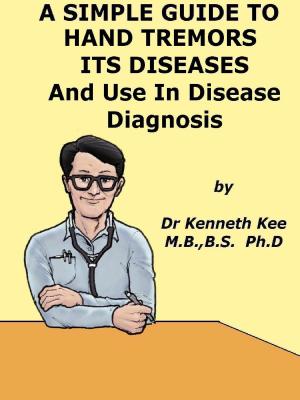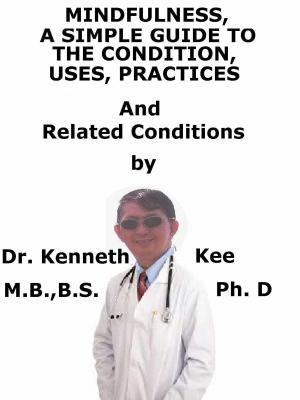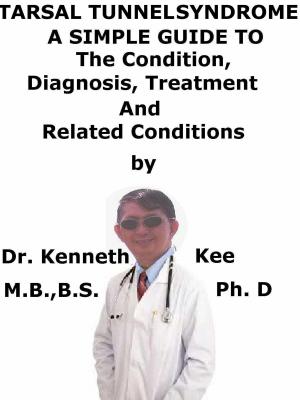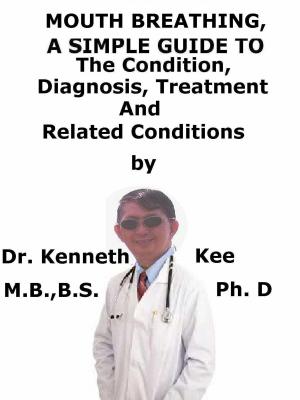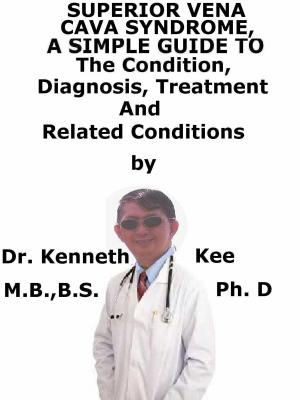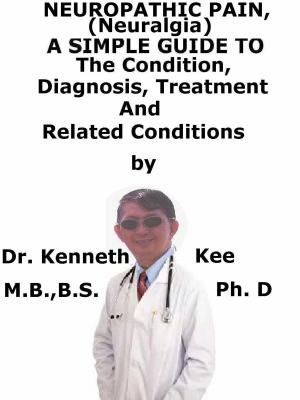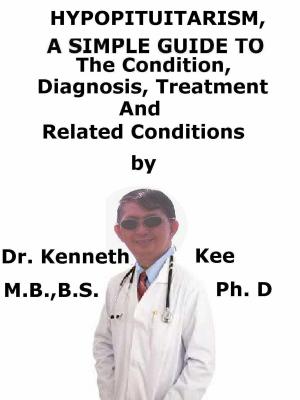Coughing, A Simple Guide To The Condition, Diagnosis, Treatment And Related Conditions
Nonfiction, Health & Well Being, Medical, Specialties, Pulmonary & Thoracic, Health, Ailments & Diseases, Respiratory| Author: | Kenneth Kee | ISBN: | 9781310325595 |
| Publisher: | Kenneth Kee | Publication: | June 14, 2015 |
| Imprint: | Smashwords Edition | Language: | English |
| Author: | Kenneth Kee |
| ISBN: | 9781310325595 |
| Publisher: | Kenneth Kee |
| Publication: | June 14, 2015 |
| Imprint: | Smashwords Edition |
| Language: | English |
Coughing
Everyone has coughed at least once in his or her lifetime.
Cough is the medical term for reflex body defense mechanism meant to expel unwanted secretions, blood or foreign bodies from the airways.
The cough act is spontaneous and activated by the irritation of the nerve receptors where the impulse travels to the cough center to effect the cough mechanism.
The body adopts this mechanism to protect the airways unlike the digestive system which has an inlet (the mouth) and an exit (the anus).
The lung has a common entry and exit point and adopts the cough as the method when foreign bodies are accidentally inhaled into the lungs or that other material such as infected mucus and phlegm needed to be expelled from the airways.
The cough nerves are stimulated when the airway is inflamed as in infection by any forms of micro-organisms.
What are the types of cough?
1. Acute cough lasting up to 3 weeks
2. Sub-acute cough between 3 to 8 weeks
3. Chronic cough beyond 8 weeks
What are the causes of cough?
The causes are:
1. Infections
The most common cause is viral infections followed by infections by bacteria such as tuberculosis and fungi.
2. Non infective causes such as bronchial asthma, bronchiectasis, cigarette smoking and lung cancers
3. Aspirations of regurgitated materials and acid reflux of stomach contents (GERD) during periods of intoxications which may occur when a person is under the influence of sedatives
4. Inhalation of irritants or foreign bodies
5. Inhalation of poisonous fumes and toxic chemicals especially in metal or chemical industries
6. Allergic conditions such as asthma or allergic bronchitis or allergic rhinitis
7. Unusual and uncommonly causes which include auto-immune diseases and heart failure
8. Other serious illnesses such as cancers
9. Ultimately having excluded all pathology mechanism, the cough may be due to psychological stress.
As a whole it is an important protective mechanism to protect the body.
The most common cause of cough is in infection, cigarette smoking and allergic mechanism as in bronchial asthma.
What are the symptoms or presentations of cough?
1. Presence or absence of sputum and its nature
This is typical of highly reactive airways as in infections and hyper-reactive airways.
Bronchopneumonia and patients with bronchiectasis typically complain of copious expectorations which are usually colored.
They may be yellow, green and blood stained occasionally.
Dirty sputum with tinges of grey is common in chronic smokers.
Bronchial carcinoma particularly alveolar cell carcinoma present with copious sputum production.
2. Presence or absence of fever
Fevers are present almost all the time in infective causes whether bacterial, viral, tuberculosis or fungal.
Generally the doctor should aware of persistent high fevers over a period beyond 3 days.
The persistent fever should alert the doctor of a possible pneumonia.
3. Accompanying breathlessness
Breathlessness with accompanying wheezing usually means a diagnosis of bronchial asthma in the younger patients.
In the older patients (>60 years of age) with the likely history of heart disease, a diagnosis of heart failure (cardiac asthma) should be considered.
Major airway obstruction occurs in cases of endo-bronchial tumors or in the very young foreign body’s inhalation.
Moderate to large pleural effusions as well as pneumothorax will cause breathlessness.
4. Chest pains
The bronchial tree is a relatively painless organ.
However pain is experienced when the pathology especially inflammation involves the parietal pleura.
Deep seated pneumonic processes involving the parietal pleura usually cause severe pain which may restrict the breathing.
Pleural tuberculosis however is relatively pain free and so are most malignant pleural involvements.
5. Hemoptysis or blood in the sputum
The coughing of blood is also a dangerous symptom and rightly so as it may indicate the presence of a serious lung problem.
Coughing
Everyone has coughed at least once in his or her lifetime.
Cough is the medical term for reflex body defense mechanism meant to expel unwanted secretions, blood or foreign bodies from the airways.
The cough act is spontaneous and activated by the irritation of the nerve receptors where the impulse travels to the cough center to effect the cough mechanism.
The body adopts this mechanism to protect the airways unlike the digestive system which has an inlet (the mouth) and an exit (the anus).
The lung has a common entry and exit point and adopts the cough as the method when foreign bodies are accidentally inhaled into the lungs or that other material such as infected mucus and phlegm needed to be expelled from the airways.
The cough nerves are stimulated when the airway is inflamed as in infection by any forms of micro-organisms.
What are the types of cough?
1. Acute cough lasting up to 3 weeks
2. Sub-acute cough between 3 to 8 weeks
3. Chronic cough beyond 8 weeks
What are the causes of cough?
The causes are:
1. Infections
The most common cause is viral infections followed by infections by bacteria such as tuberculosis and fungi.
2. Non infective causes such as bronchial asthma, bronchiectasis, cigarette smoking and lung cancers
3. Aspirations of regurgitated materials and acid reflux of stomach contents (GERD) during periods of intoxications which may occur when a person is under the influence of sedatives
4. Inhalation of irritants or foreign bodies
5. Inhalation of poisonous fumes and toxic chemicals especially in metal or chemical industries
6. Allergic conditions such as asthma or allergic bronchitis or allergic rhinitis
7. Unusual and uncommonly causes which include auto-immune diseases and heart failure
8. Other serious illnesses such as cancers
9. Ultimately having excluded all pathology mechanism, the cough may be due to psychological stress.
As a whole it is an important protective mechanism to protect the body.
The most common cause of cough is in infection, cigarette smoking and allergic mechanism as in bronchial asthma.
What are the symptoms or presentations of cough?
1. Presence or absence of sputum and its nature
This is typical of highly reactive airways as in infections and hyper-reactive airways.
Bronchopneumonia and patients with bronchiectasis typically complain of copious expectorations which are usually colored.
They may be yellow, green and blood stained occasionally.
Dirty sputum with tinges of grey is common in chronic smokers.
Bronchial carcinoma particularly alveolar cell carcinoma present with copious sputum production.
2. Presence or absence of fever
Fevers are present almost all the time in infective causes whether bacterial, viral, tuberculosis or fungal.
Generally the doctor should aware of persistent high fevers over a period beyond 3 days.
The persistent fever should alert the doctor of a possible pneumonia.
3. Accompanying breathlessness
Breathlessness with accompanying wheezing usually means a diagnosis of bronchial asthma in the younger patients.
In the older patients (>60 years of age) with the likely history of heart disease, a diagnosis of heart failure (cardiac asthma) should be considered.
Major airway obstruction occurs in cases of endo-bronchial tumors or in the very young foreign body’s inhalation.
Moderate to large pleural effusions as well as pneumothorax will cause breathlessness.
4. Chest pains
The bronchial tree is a relatively painless organ.
However pain is experienced when the pathology especially inflammation involves the parietal pleura.
Deep seated pneumonic processes involving the parietal pleura usually cause severe pain which may restrict the breathing.
Pleural tuberculosis however is relatively pain free and so are most malignant pleural involvements.
5. Hemoptysis or blood in the sputum
The coughing of blood is also a dangerous symptom and rightly so as it may indicate the presence of a serious lung problem.

